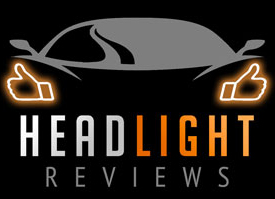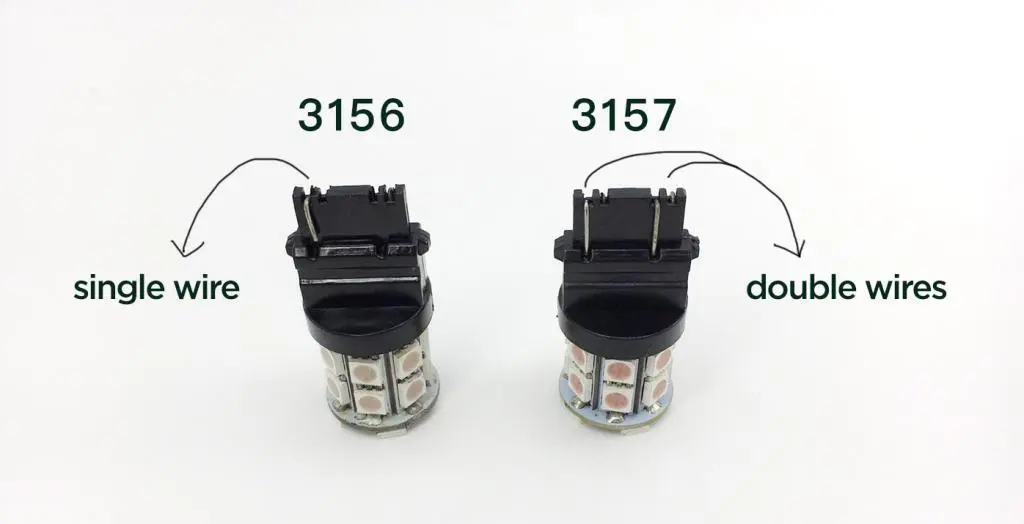In this article, I will be taking a look at the major differences between 3156 and 3157 bulbs.
When it comes to the differences between these two bulbs, they are quite subtle but do in fact make each bulb suited for different uses.
Specifically, 3157 bulbs feature dual filaments and offer brighter light output. Furthermore, 3156 bulbs have fewer colour options and only one level of brightness compared to two on 3157 bulbs.
If you’re not sure which bulb is best for your needs, we have tested and evaluated the vast majority of options for both and can help you make a more informed buying decision.
Keep reading for more information on the differences between 3156 and 3157 bulbs.
| 3156 | 3157 |
| Cannot replace a 3157 bulb | Can be fitted into a 3156 socket |
| Single filament bulb | Dual filament bulb |
| Can be used as turn signal or reversing light | Used as a brake light, turn signal, or running light |
| Slightly dimmer than the 3156 | Brighter light output |
| Only one level of brightness | Two levels of brightness |
| 2 wires allow only one level of brightness | 4 wires for two different levels of brightness |
| Fewer colour options | More bulb colour options with greater range |
3156 and 3157 Bulbs Compared
Filaments
At a glance, the biggest difference you’ll see between 3156 and 3157 bulbs is the number of filaments. 3156 bulbs feature a single filament whereas 3157 bulbs have two.
This allows 3157 bulbs to have slightly brighter, more visible light output that makes for a safer and more easily noticeable look while driving at night.
Use cases
3156 bulbs, because of their inferior filaments, can only be used as turn signals or reversing lights. On the other hand, 3157 bulbs are brighter and more suited to a wider range of use cases such as in brake lights, turn signals, and even running lights which are visible during the day.
Brightness
If you’re looking for the brighter bulb of the two, 3157 bulbs are the obvious choice. They draw more power than 3156 bulbs and have an additional filament which allows them to generate crisp, clear, and bright light.
In practice though, the difference in brightness between 3156 and 3157 bulbs is only really discernible if you’re the type of person who walks around with a lumen meter in their back pocket (and a sensitive one at that!)
One advantage 3157 bulbs have over 3156 bulbs however, is the fact that they can be configured for two levels of brightness. That means you can use them in a wider range of applications than 3156 bulbs which only have one level of brightness.
Wiring
One more difference that makes these bulbs unique is their wiring. 3156 bulbs only have two wires thus enabling only one level of brightness. 3157 bulbs on the other hand have four wires which facilitate two different levels of brightness.
Colour options
If you’re looking for more variety in the colour of these bulbs, 3157 is the way to go. 3156 bulbs have fewer colour options, whereas 3157 bulbs have more colour options with better reproduction and clarity.
Compatibility
Finally, if your car uses a 3157 bulb, and you accidentally purchased a 3156 bulb, you’re in for a bit of disappointment. That is because while 3157 bulbs can be retro fitted into a 3156 socket, the reverse is not possible.
What are 3156 bulbs used for?
- Turn signals: 3156 bulbs are often used in the vehicle’s turn signal indicators due to their brightness and clear illumination, enhancing visibility to other drivers when a turn or lane change is being signaled.
- Brake lights: Due to their high intensity, 3156 bulbs can also be found in brake light applications where it’s crucial that the light is bright and immediately noticeable.
- Reverse lights: The 3156 bulb’s brightness makes it a good fit for reverse or backup lights, which are important for visibility when a vehicle is backing up.
What are 3157 bulbs used for?
- Brake and Tail Lights: The dual-filament design allows the 3157 bulb to serve as both a brake light and a tail light. One filament operates at lower brightness for the tail light, while the other filament brightens when the brake is applied.
- Turn Signals: Similarly, the dual-filament configuration enables the bulb to function as a running light when driving, and then flash at a higher brightness when the turn signal is activated.
- Daytime Running Lights (DRL): In some vehicles, 3157 bulbs are used for Daytime Running Lights due to their ability to operate at two different brightness levels.
- Parking Lights: These are the lights you typically use when parking your vehicle in public places during the night, and 3157 bulbs are often used in these applications as well.
Conclusion
So to sum up, 3157 bulbs are brighter, with more colour options, and better visibility than 3156 bulbs. Not to mention, they support two different levels of brightness and can be used in a wider range of applications.
While it is possible to fit 3157 bulbs into 3156 sockets with some elbow grease, it doesn’t work the other way around.
And to be perfectly honest, we don’t recommend going out of your way to put 3157 bulbs into 3156 compatible sockets. Yes, you do get slightly better illumination and visibility, but we can report from first hand testing that the juice just isn’t worth the squeeze.
In fact, we recommend using whichever bulb your car’s manufacturer recommends for optimal performance and reliability.


